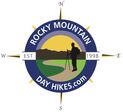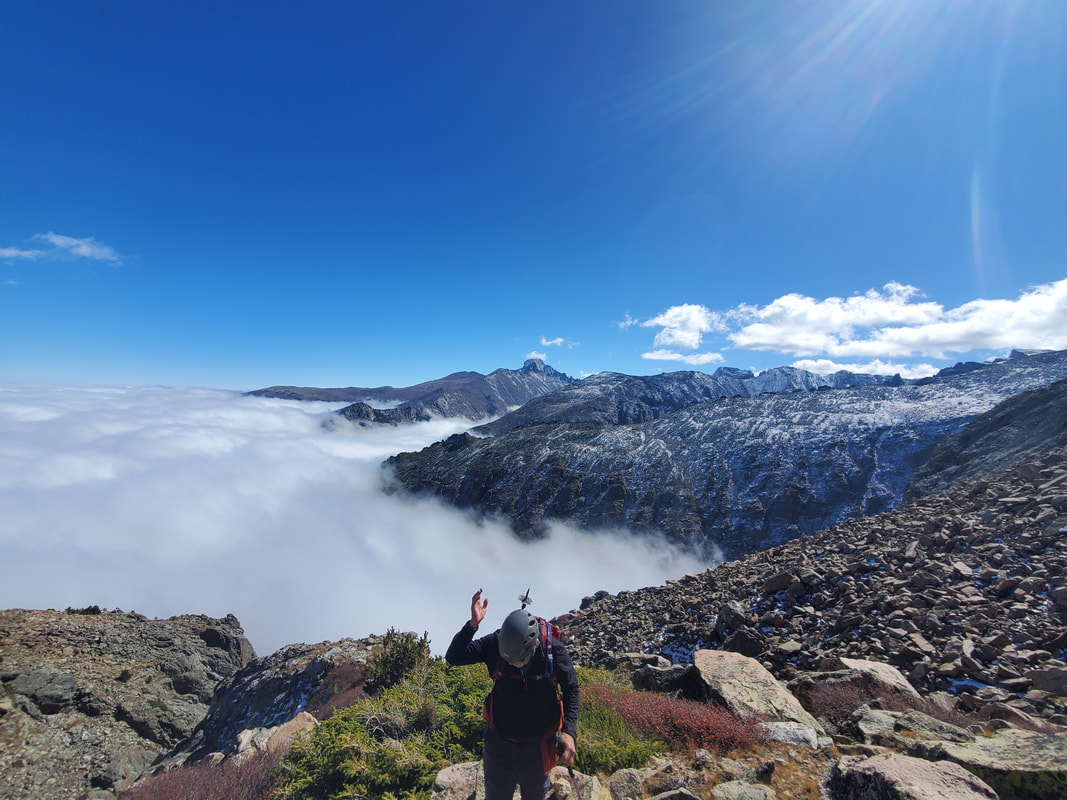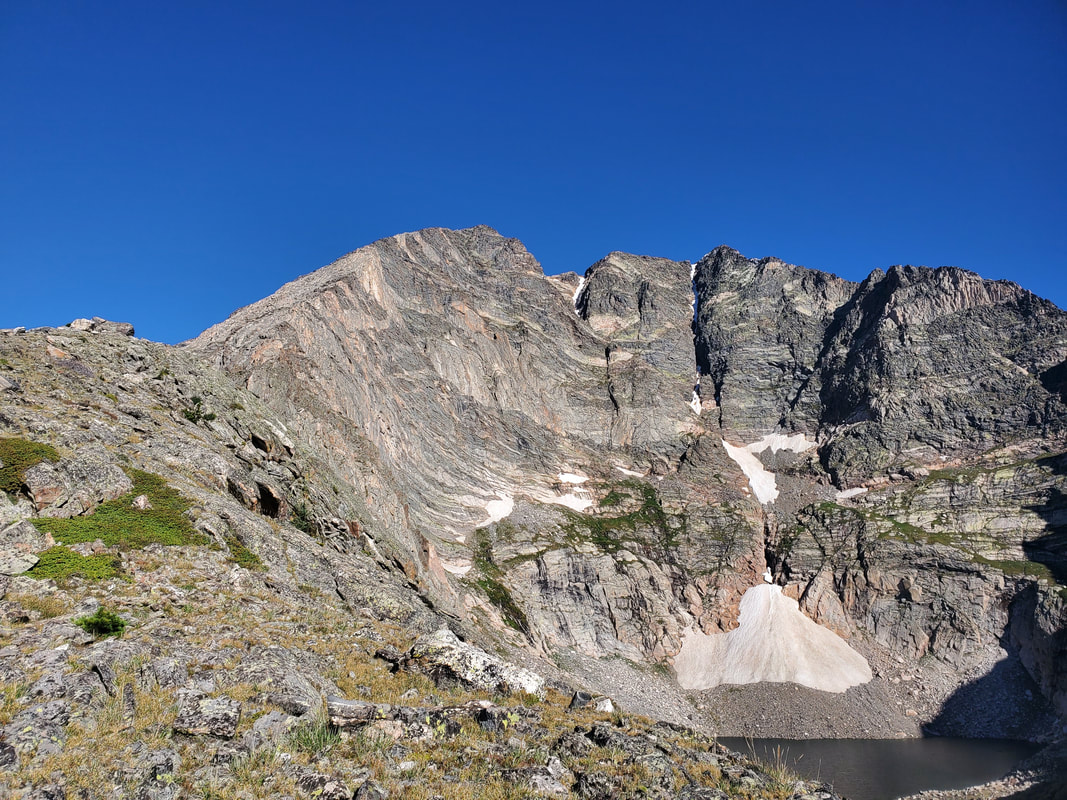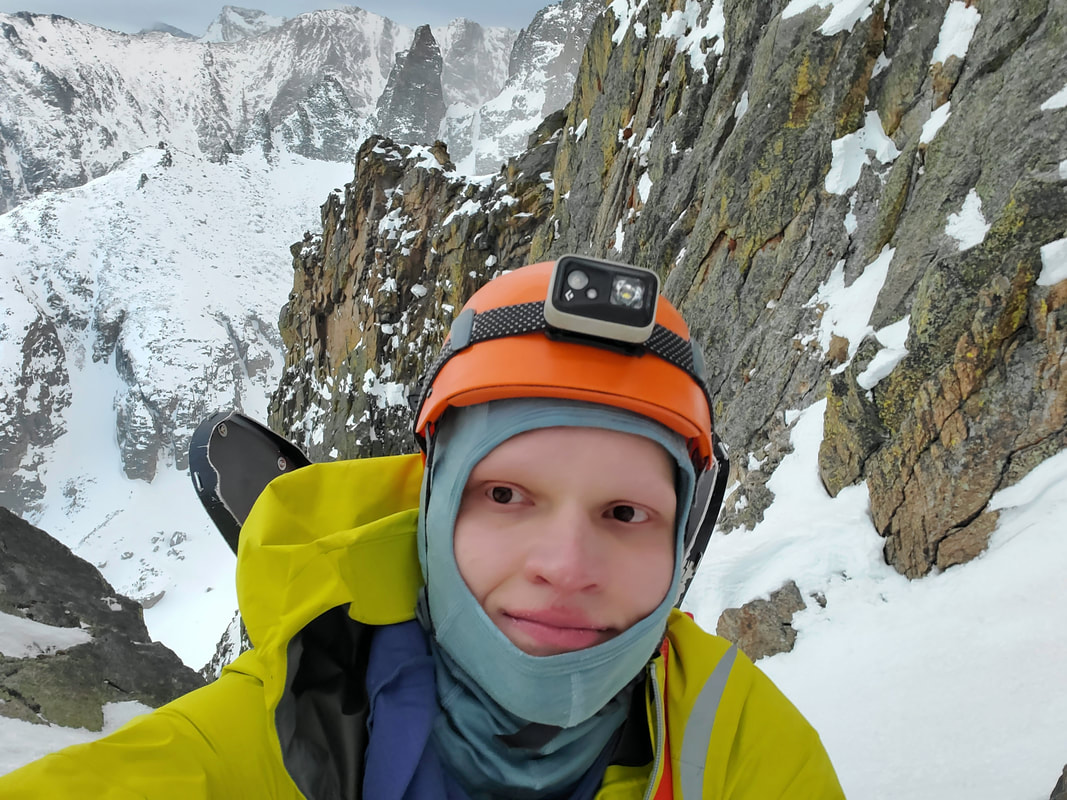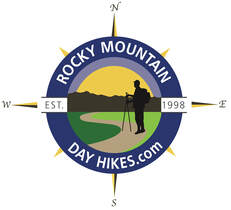|
Notes from the
Trail |
|
by Ally Anderson Physiology and Medical Sciences UA Franke Honors College University of Arizona “The mountains are calling and I must go." This is a popular quote by John Muir that rang true for a young college student named Ely Bordt. His first experience traveling to the Rocky Mountains pulled him in and never let him go. The Rockies challenged him and changed him, teaching him what his mind and body are truly capable of with enough grit and enthusiasm. It all started the summer of 2017 when Ely participated in a Colorado Ecosystem Field Studies program. The field study website describes this experience as ”An opportunity to study the Colorado Rockies and apply your classroom and textbook learning while immersed in an incredible mountain ecosystem setting.” After that first taste of living and working in the mountains, Ely's life trajectory shifted as he felt a strong pull towards the mountains postgrad. As a wide-eyed college graduate, Ely jumped at the opportunity to trade the flat lands of Indiana for the Colorado Rockies. Flashforward to February of 2021, Ely got a job in Longmont, Colorado and made a point to be on a trail whenever he wasn't working. Having no prior experience hiking or climbing, Ely would often hit the trials with the sole motivation of good views and impressive photos. This all changed when a year later he met his mentor, Kevin Rusk, a seasoned mountain climber with a big heart to show Ely the joy of pushing his body to new heights in the Rockies. Kevin taught Ely how to use his gear to climb in different terrains and instilled in him the importance of precautionary measures like bringing a rope even if you don't think you’ll need it. Ely followed Kevin's footsteps all winter, learning to climb glaciers, starting at their first climb together up Tyndall Glacier. When that winter was over, they climbed rocks together through the summer. “(Kevin) thought, let's get you off a trail and into some ropes, and since then... It erupted and now I'm snow climbing, rock climbing, and scrambling and don't so much stick with trails anymore, I aim to get off the trails.” -Ely As mileage started to increase and he started to fall more and more in love with the mountains, Ely went from a novice climber to someone whose mind revolved around getting back into the challenging terrain of the mountains. Rocky Mountain National Park and the Indian Peaks south of the park became his favorite spots in his early years of serious climbing. He worked tirelessly to condition his body to handle even the most advanced terrain alongside his mentor Kevin. How is it that in only a few short years, Ely has managed to completely shift his lifestyle from somewhat sedentary to extremely athletic? What are the physiological implications that come along with the ability to sustain endurance and strength while clinging to the side of a mountain? How does Ely fuel and train his body to perform at such a capacity? Shift in Lifestyle and Mental Headspace Ely has not always been able to casually climb Longs Peak. Longs is a challenging 14er that requires great deals of mental and physical toughness and is a great achievement for those who complete it. Ely has joyfully completed this climb multiple times and has plans to climb it again! This kind of ambition and ability to take on such challenges illustrates the dramatic shift from how he held himself in his childhood. He explains his early years as a period of time when he was overweight and lacking motivation to keep a consistent exercise regime due to a lack of excitement towards most types of physical activity. ”Prior to hiking, I was a gamer. I spent a lot of time online. There's a lot of toxicity online. I didn’t get out much. Hiking allows me to clear my mind.” - Ely He was an uninspired kid, most often seen indoors playing video games, lacking the desire for exploration or challenging physical feats. Fast forward to the present day, Ely is calmer and more mellow, feeding off of the serine mountain landscape he surrounds himself with. He's a social young adult, full of ambition and he credits this dramatic shift into a more positive headspace to the mountains. “I was entirely unathletic prior to that (moving to Colorado), it was a big change. The views drive me to get out but more so, if I go too long without the mountains, I'm thinking, I need to get a workout in. I need to get active.” -Ely “The mountains are something I get hungry for if I go too long without” -Ely Ely explained how he's tried weightlifting and cycling, but the mountains are the first and only thing that he's seen dramatically motivate him to get active. He has gone from an unmotivated child to a driven athlete looking forward to the next adventure, overall more enthusiastic and motivated about life as a whole. Why Does Exercise Improve My Headspace? As Ely experienced firsthand, there is a link between a lifestyle that prioritizes physical activity and improved mental headspace. The moment someone participates in physical activity, there are neurochemical changes that start taking place. There are hormones directly correlated to stress, which are reduced upon an exercise induced increase in heart rate. As these stress hormones are reduced, chemicals in the brain called endorphins are increased. Endorphins act on the body to brighten a person’s mood and alleviate stress. These chemical changes happen every time a person is physically active and even more consistently in someone who has a habit of increasing their heart rate through exercise. This explains why Ely’s attitude and outlook seemed to transform completely as he became more active. He began to alter his brain chemistry as a whole! Building Cardiovascular Stamina On top of building mental endurance, Ely has also been on a journey of building cardiovascular stamina. This is the ability of the heart and lungs to endure longer and harder through difficult exercise. Coming from an inactive lifestyle in Indiana, Ely describes this as a significant challenge. He started training on lower elevation trails in the Boulder Colorado area and built up to the challenging elevations of the Rocky Mountain National Park. Ely noticed improvements in his cardiovascular capacity when he got out into the mountains as much as possible getting as high as possible! He would celebrate each landmark climb at a higher elevation, constantly pushing himself to get higher and on more challenging trials. Training at Altitude A very common strategy among athletes is training at higher altitudes to develop stronger cardiovascular endurance because of the cardiovascular challenge of being in low-oxygen environments. Something special happens to the body’s ability to carry oxygen when someone puts themselves in a high-altitude environment where the oxygen is thin and less abundant. The low amounts of oxygen trigger a hormone called EPO (erythropoietin), which stimulates the production of red blood cells. The red blood cells begin to grow larger and increase in number to maximize the amount of oxygen they can hold and transport throughout the body. Ely, being an elite athlete who spends the majority of his time exercising at high elevation, has red blood cells that look differently than those of an athlete at sea level who has an abundance of oxygen in the air around them! If Ely were to go down to sea level, theoretically, he would find that his cardiovascular endurance would be even better. He has such a high number of red blood cells at a greater volume ready to make the most of little amounts of oxygen but finding that at sea level there is more oxygen to use than normal. It is very common for athletes to train at high altitudes to change their red blood cell composition and come back down to sea level with an advantage. Fueling the Body to Endure the Mountains Once Ely became more acclimated to the high elevation of the Colorado Rockies he was able to withstand more difficult trails mentally and cardiovascularly. He started to push the limits of what his body was able to achieve and to do so, he needed the right fuel. This meant taking nutrition to a whole new level. Ely describes his diet as high protein and high carb to have energy to perform at challenging levels, restore muscle, and maintain strength. Ely has a specific diet the day before a big hike. He prioritizes water, drinking four liters throughout the day before his planned day in the mountains. He also prioritizes eating as many calories as he can: chips, queso, whole pizzas, you name it. Ely expressed that the biggest component of waking up with energy is drinking substantial amounts of water the day before. While he’s out on the trail, Ely focuses on his sugar intake: fruit snacks, Honey Stingers, and salt tablets with and without caffeine. Ely is slightly anemic, meaning he has a blood disorder that reduces the effectiveness of the blood stream's ability to carry oxygen. To combat this, the morning of a big day in the mountains he will eat two servings of dry Cheerios. This cereal contains 70% of his daily iron intake. Consuming great amounts of iron translates to an increased amount of hemoglobin and an increased amount of oxygen capacity in the mountains. He eats these Cheerios without milk because milk inhibits iron absorption when eaten in conjunction with iron. Importance of Good Nutrition Ely's methods of fueling his body before and during athletic activity are widely used by athletes performing at his level of difficulty. His emphasis on water intake the day before extreme physical exertion is very important, especially on a hot day where perspiration is more likely. Water is important in so many aspects of body functionality including regulation of body temperature, lubrication of the joints, and transportation and digestion of important nutrients. Adequate levels of hydration affect many aspects of athletic performance. Carbohydrates are used by the body as its main fuel source during any kind of energy expenditure. Having a plentiful store of carbohydrates for the body to use will supply more energy and allow it to endure harder and longer. Nutritionists also recommend athletes prioritize snacks throughout the day, as Ely does, to maintain energy and nutrition, keeping the body strong and able to endure. What is Next for Ely Bordt in the Mountains ”My biggest challenge is just bravery” -Ely In past summers, Ely has done a lot of fourth-class scrambling. His goal for this summer is to get into more low fifth-class scrambling. This is the kind of terrain that borders the need for a rope. He aims now to challenge himself on more difficult terrain that is intimidating and more technical. If it is at all possible to be done without a rope, that's the way he wants to get it done. Ely does prioritize his safety, carrying with him what Kevin taught him in the beginning. “When I talk about getting into these technical terrains being my goals next summer, I always go in with what he (Kevin) taught me about having an exit strategy. I'll probably bring a rope and even if I don't use it on the way up, if I get cliffed out and need a way to get out of what I'm on, a rope will always be handy for at least rappelling and getting off.” -Ely Ely wants to get in the right mental space to be able to handle harder terrains such as the north face of Longs Peak. “I can see the goals I had and met, and I'm now wondering what I can do next” -Ely
0 Comments
Leave a Reply. |
"The wild requires that we learn the terrain, nod to all the plants and animals and birds, ford the streams and cross the ridges, and tell a good story when we get back home." ~ Gary Snyder
Categories
All
“Hiking -I don’t like either the word or the thing. People ought to saunter in the mountains - not hike! Do you know the origin of the word ‘saunter?’ It’s a beautiful word. Away back in the Middle Ages people used to go on pilgrimages to the Holy Land, and when people in the villages through which they passed asked where they were going, they would reply, A la sainte terre,’ ‘To the Holy Land.’ And so they became known as sainte-terre-ers or saunterers. Now these mountains are our Holy Land, and we ought to saunter through them reverently, not ‘hike’ through them.” ~ John Muir |
© Copyright 2025 Barefoot Publications, All Rights Reserved
